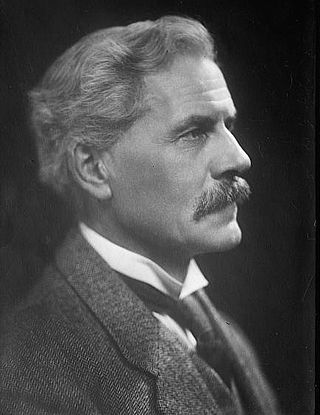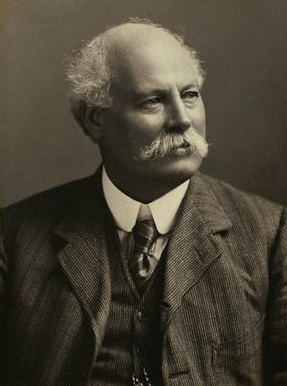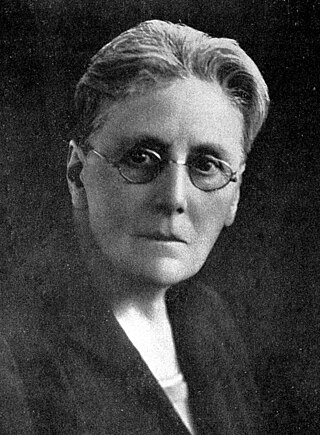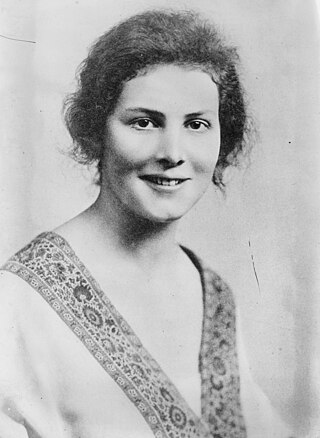
James Ramsay MacDonald was a British politician who served as Prime Minister of the United Kingdom, the first who belonged to the Labour Party, leading minority Labour governments for nine months in 1924 and again between 1929 and 1931. From 1931 to 1935, he headed a National Government dominated by the Conservative Party and supported by only a few Labour members. MacDonald was expelled from the Labour Party as a result.

Flora MacDonald was a member of Clan Macdonald of Sleat, best known for helping Charles Edward Stuart evade government troops after the Battle of Culloden in April 1746. Her family generally backed the government during the 1745 Rising and MacDonald later claimed to have assisted Charles out of sympathy for his situation.

Margaret Grace Bondfield was a British Labour Party politician, trade unionist and women's rights activist. She became the first female cabinet minister, and the first woman to be a privy counsellor in the UK, when she was appointed Minister of Labour in the Labour government of 1929–31. She had earlier become the first woman to chair the General Council of the Trades Union Congress (TUC).

Sir Donald Maclean was a British Liberal Party politician in the United Kingdom. He was Leader of the Opposition between 1918 and 1920 and served in the Cabinet of Ramsay MacDonald's National Government as President of the Board of Education from 1931 until his death in June the following year.

The second MacDonald ministry was formed by Ramsay MacDonald on his reappointment as Prime Minister of the United Kingdom by King George V on 5 June 1929. It was only the second time the Labour Party had formed a government; the First MacDonald Ministry held office in 1924.

Sir Thomas Brock was an English sculptor and medallist, notable for the creation of several large public sculptures and monuments in Britain and abroad in the late nineteenth and early twentieth centuries. His most famous work is the Victoria Memorial in front of Buckingham Palace, London. Other commissions included the redesign of the effigy of Queen Victoria on British coinage, the massive bronze equestrian statue of Edward, the Black Prince, in City Square, Leeds and the completion of the statue of Prince Albert on the Albert Memorial.
Margaret MacDonald, Macdonald or McDonald may refer to:

Ethel Bentham, was a progressive medical doctor, a politician and a suffragist in the United Kingdom. She was born in London, educated at Alexandra School and College in Dublin, the London School of Medicine for Women and the Rotunda Hospital.

Sir William Goscombe John was a prolific Welsh sculptor known for his many public memorials. As a sculptor, John developed a distinctive style of his own while respecting classical traditions and forms of sculpture. He gained national attention with statues of eminent Victorians in London and Cardiff and subsequently, after both the Second Boer War and World War I, created a large number of war memorials. These included the two large group works, The Response 1914 in Newcastle upon Tyne and the Port Sunlight War Memorial which are considered the finest sculptural ensembles on any British monument.

Ishbel Allan MacDonald was the daughter of Prime Minister of the United Kingdom, Ramsay MacDonald and his wife Margaret MacDonald née Gladstone. Margaret's death in 1911 – a year after their son David had died – left Ramsay a single father to his remaining five children. When, in 1924 he came to power as Prime Minister of the country's first Labour Government, it was Ishbel, as the eldest daughter, who her father decided should be his hostess at 10 Downing Street. At just 20 she became the youngest person ever to take on the role.

Margaret Ethel MacDonald was a British feminist, social reformer, and wife of Labour politician Ramsay MacDonald from 1896 until her death from blood poisoning in 1911.

Richard Reginald Goulden (1876–1932) was a British sculptor operational in the early 20th century.
Alfred Turner was an English sculptor notable for several large public monuments. These included statues of Queen Victoria, works in the Fishmonger's Hall in London and several war memorials, both in the Britiah Isles and abroad.

George Edward Wade was a British sculptor. He was largely self-taught as an artist and is best remembered for his statues of royalty and politicians.

John Hutchison was a Scottish sculptor based in Edinburgh. He was the son of an unnamed builder, and his artistic life began as a thirteen-year-old woodcarving apprentice. He attended art school in the evenings, then later became a student at the Trustees Academy. and attracted the patronage of its owner, Patrick Allan Fraser, who gave him commissions to fund his study in Rome. Although after Rome he continued to enjoy ancient Roman sculptural themes, he remained in Edinburgh for the rest of his life, working in wood, clay and marble, and concentrating on portraiture of Scottish people, and images of Scottish myth and history. He created the bust of Sir Walter Scott in Poets' Corner in Westminster Abbey. He was a successful artist who received commissions from Queen Victoria.
George Belt was a British politician, who served on London County Council.

The Memorial to Dr Barnardo by George Frampton, at Barkingside in the London Borough of Redbridge, commemorates the founder of the Barnardo's children's charity. Born in Dublin into a Sephardic Jewish family, Thomas John Barnardo moved to the East End of London in 1866 where he established a chain of orphanages that developed into the Barnardo's charity. He died in 1905 and, in a move unusual for the time, was cremated; his ashes were interred in front of Cairn's House, the original building of his Barkingside children's village. In 1908, a memorial was raised on the site, the sculpture being undertaken by George Frampton, who worked without a fee. The memorial was designated a Grade II listed structure in 1979 and upgraded to II* in 2010.

Kingston upon Thames War Memorial, in the Memorial Garden on Union Street, Kingston upon Thames, London, commemorates the men of the town who died in the First World War. After 1945, the memorial was updated to recognise casualties from the Second World War. The memorial was commissioned by the town council and was designed by the British sculptor Richard Reginald Goulden. The memorial includes a bronze statue of a nude warrior, carrying a flaming cross and wielding a sword with which he defends two children from a serpent, erected on a granite plinth, with bronze plaques listing the names of the dead. Goulden designed a number of such allegorical memorials, including others at Crompton, Greater Manchester, and Redhill, Surrey. The Kingston memorial was designated a Grade II listed structure in 1983. This was revised upwards in 2016 to Grade II*, denoting a building or structure of particular importance.
The Bank of England War Memorial, in the internal Garden Court at the headquarters of the Bank of England in the City of London, commemorates the bank's staff who were killed while serving in the First World War and Second World War. It includes a bronze sculpture by Richard Reginald Goulden portraying Saint Christopher carrying the Christ Child. It became a Grade II listed building in 2017. The surrounding buildings of the bank are separately listed at Grade I.

The Gladstone Memorial on the Strand, London is a bronze sculpture of the British statesman, created by Hamo Thornycroft between 1899-1905. The statue was erected as the national memorial to Gladstone and shows him in the robes of the Chancellor of the Exchequer. The figure stands on a plinth surrounded by allegorical figures depicting four of the Virtues, Courage, Brotherhood, Education and Aspiration. The memorial is a Grade II listed structure.

















